
 Home
Home
 Updater
Updater
 Me
Me
 Living
Living
 Sport
Sport
 Work
Work
 Contact
Contact
 Germar's Monthly Updater
Germar's Monthly Updater
|
September and October 2000: Santa Monika, The Getty Center, Hollywood, Mount Lowe, La Jolla Arts Festival, and Cuyamaca State Park
In September, my mom's visit to San Diego went on and we had a great weekend in Santa Monika, a famous beach town north-west of Los Angeles. Here is the beach with my mother in the middle, chasing gulls.
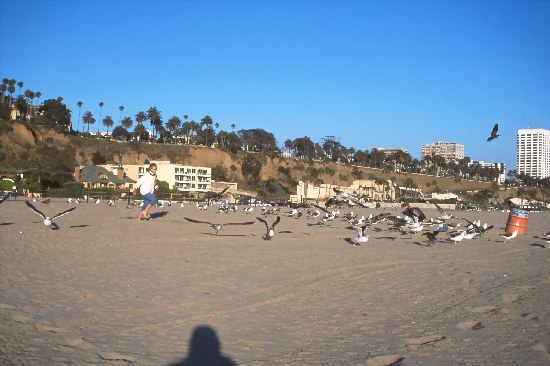
For some reasons, Americans don't trust people swimming without supervision. So there are life guard stations at every beach, one station every 100 meters. Malibu beach, where "Baywatch" was recorded, is close to Santa Monika. I guess that the real life of a life guard is less exciting than this soap opera suggests. Most guys and girls are just sitting in wooden or plastic containters like the one below for the whole day, waiting that someone gets into troubles. They are nice folks, though. I had once problems with my car and they were very helpful.
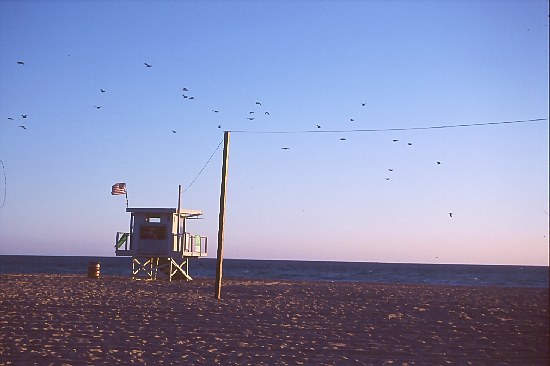
A great sight between Santa Monica and Los Angeles is the Getty Center, which accommodates one of the largest collection of paintings and sculptures in North America. The museum origins date to 1953, when the oil tycoon J. Paul Getty established a small museum of Greek and Roman antiquities, 18th-century French furniture, and European paintings at his home in Malibu. When most of Mr. Getty's personal estate passed to the Getty Trust in 1982, the Trustees decided to expand the museum. The result is The Getty Center, which opened in 1997. The total capital of the Trust is about 3.5 Billion Dollars. In order to stay tax-exempt all interests of about 150 Mio Dollars earned annually have to be invested in art or infrastructure. Spending so much money every year is not an easy task and this may explain the enormous sums paied by the Trust for single pieces of art and also the lavish architecture of the Getty Center. Below is the museum's entrance hall viewing the exhibition pavilions.

The facades of the Museum are covered with Travertine marble, which came from quarries in Italy. The Travertine blocks weigh 16,000 tons in total, and 100 ship loads were needed to transport the expensive material to Los Angeles. The cashier in the museum shop told me that the question of whether there is enough stone in the quarries was an important element in the decision process pro and contra the Travertine cladding. There was concern of running out of stone half-way through the project! I think that's not a very respectful attitude toward a unique material that once formed the basis of masterpieces of Roman art. Opinions about the building are therefore variform and some are not very flattering, as you may see here.

A highlight of the Getty Center is certainly its garden, designed by Laurie Olin and Robert Irwin. It includes 300 different varieties of plants. In the center of the garden is a labyrinth, which is unfortunately surrounded by water so that nobody can walk through.
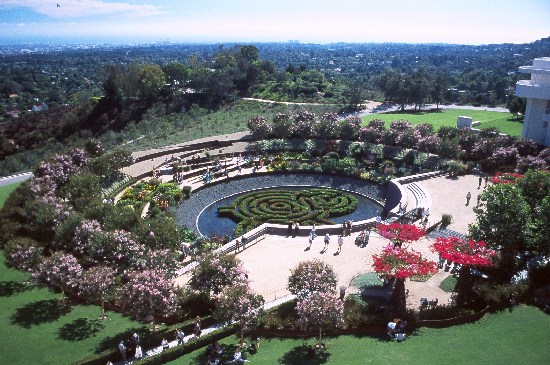
The garden with its many exotic plants is quite attractive for all sorts of animals, including hummingbirds. It is quite fascinating to watch these small birds hovering in the air.
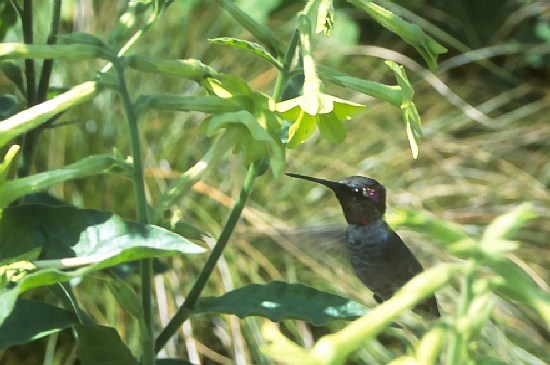
The Getty Center is also a great spot to look down on Los Angeles. Below is the center of the city, which is only a small fraction of this 15 Million citizen moloch, as seen from the Getty.

About 13 km north-west of the center is Hollywood, the famous town of stars and starlets. Most famous is the Chinese Theatre, which sometimes still serves as the venue for world premieres of new movies.

The front court of the theater is probably even better known as the cinema itself. Here, the foot and hand impressions of more than 200 movie stars are preserved in concrete, along with their signatures:
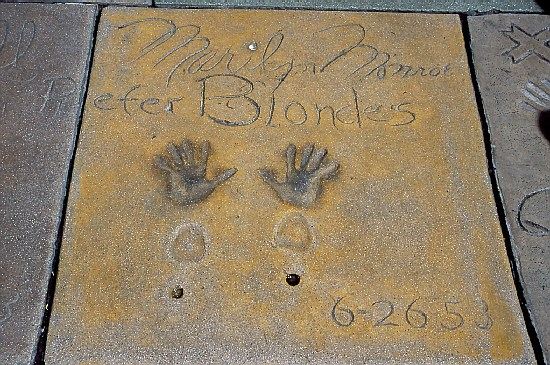
Another famous sight is the painting of Hollywood's most recognized actors sitting in a cinema. It's painted on the wall of a house.
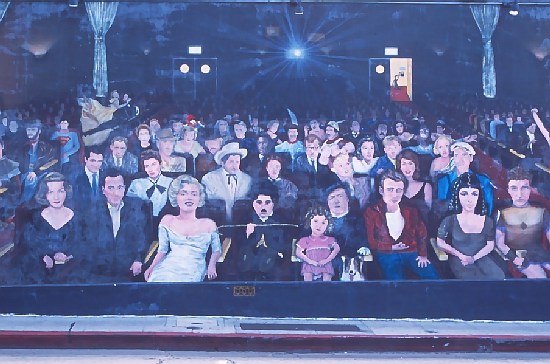
Hollywood and its main streets Hollywood Boulevard, Sunset Boulevard, and Melrouse Avenue have certainly seen better times in the past. The glamour of previous years has faded since the important ateliers have moved to other districts, like Burbank and Universal City. What remains are the Terrazo-Stars, decorating the sidewalks of Hollywood Boulevard, better known as the "Walk of Fame." There are not only actors but also important artists like Charles Schulz, the inventor of the "Peanuts", who died recently.
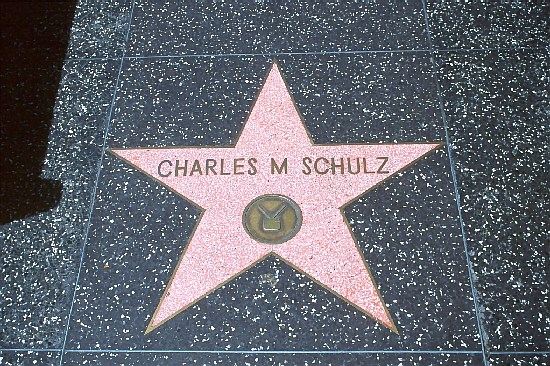
On the way back from Los Angeles we drove through the San Gabriel Mountains and climbed Mount Lowe. Above the smog layer of the city, the sky was dark blue and the prevailing vegetation of "Lord's Candles", scrubs and Yuccas, was quite scenic in front of this background. Later in the day we saw a guy at an emergency call box next to the street. Apparently, he was not able to get through, and I asked him therefore whether he needed help. It turned out that he parked his car next to the road and forgot to set the brake. So his car rolled down a cliff and came to a stop on a rock, partly destroyed. Fortunately nobody was injured. I helped him organizing a tow truck and offered him shelter in my car until the truck arrived.
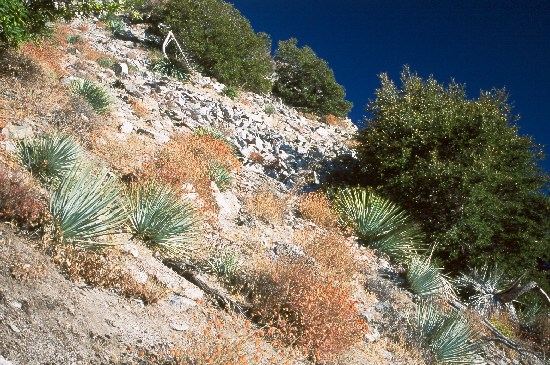
We spent the last weekend of my mother's vacation in La Jolla and surroundings. Below is the Scripps Pier, which marks the northern end of my current domicile.
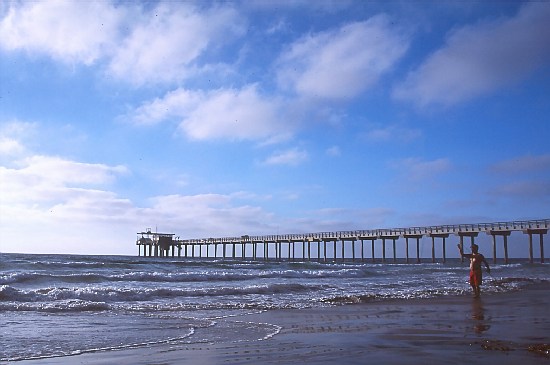
Fall brings clear weather and then I sometimes drive up to Mount Soledad, east of La Jolla. From there, the view down on San Diego, its suburbs, and waterways is fabulous. Below is the view in southern direction toward downtown San Diego. The mountains in the background are already in Mexico.
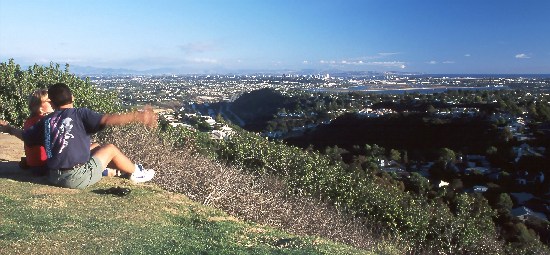
Another view from Mount Soledad during sunset. It shows a typical residential area with one-storey bungalows arranged on a rectangular grid. My mother was quite surprised that this is the typical American dwelling. Movies often suggest that US cities consist of skyscrapers. But that's true only for the very center of a city. The suburbs are cluttered with small buildings, sometimes as far as a naked eye can see, like for example in Los Angeles.
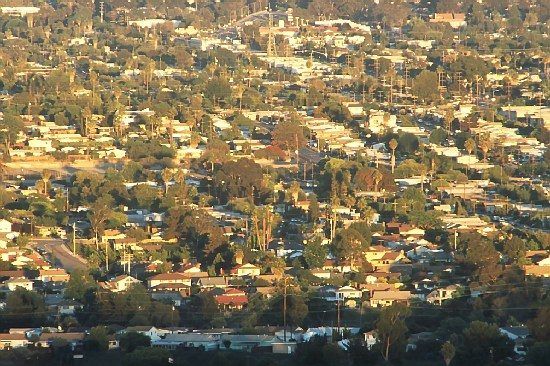
North-east of Mount Soledad is a Mormon Temple. Non-Mormans are not allowed to enter the church, so I can't tell you how it looks inside this unique building. Notice the golden Gabriel on top of the right tower. I have heard the rumor that the statue was struck by lightning just two weeks after the church opened. The Gabriel was destroyed and had to be replaced. I am now living since two years in San Diego and I have never seen a thunderstorm. So if I were a Mormon I would be a bit worried...
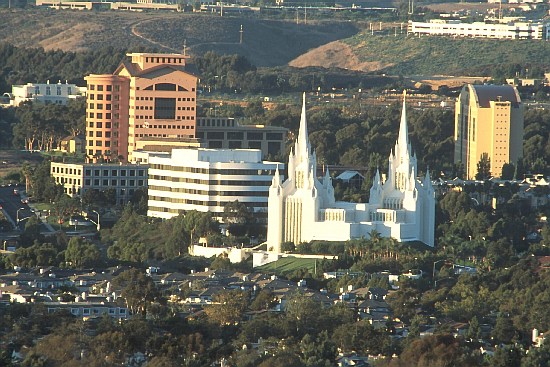
A highlight in October was the La Jolla Arts Festival. I won't show much art here, only this car parked in front of the festival venue. It's for rent, and honestly, I don't want to be the driver.
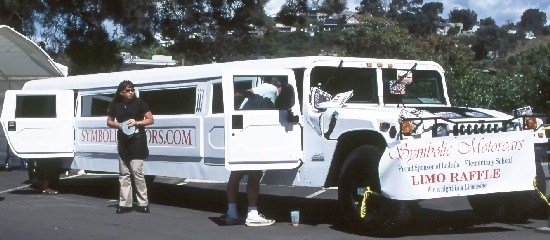
That's how it looks inside...
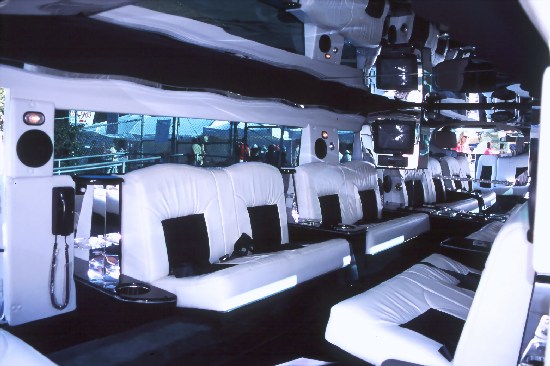
On another weekend in October I was hiking in Cuyamaca Rancho State Park. Below is the Cuyamaca Lake, seen from 6512 foot high Cuyamaca Peak, one of the highest mountains in San Diego county. The park has a remarkable plant community, containing dense stands of cone-bearing trees, magnificent oaks, azaleas and endemic meadow foam.
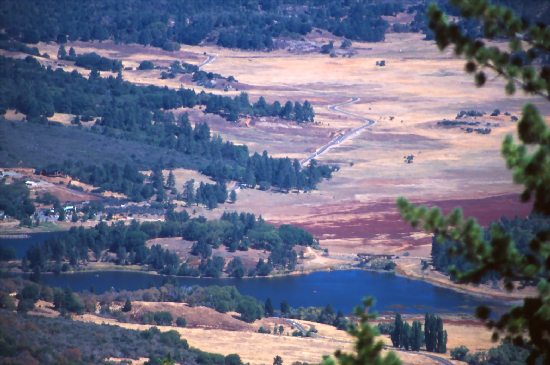
There are lots of birds in the park, like these woodpeckers. Trees are sometimes completely covered by holes. I have no idea why these birds torture themselves like crazy. The branches are clearly too thin to build breeding caves. So it must be masochism.
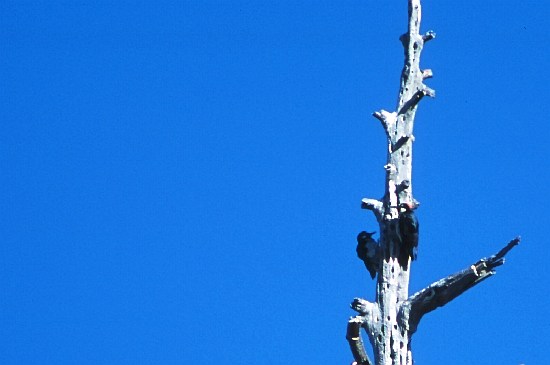
| |||||||
|
Top | Updates from 2000 | Current Updater
Last updated: 23 January 2016
|
|||||||